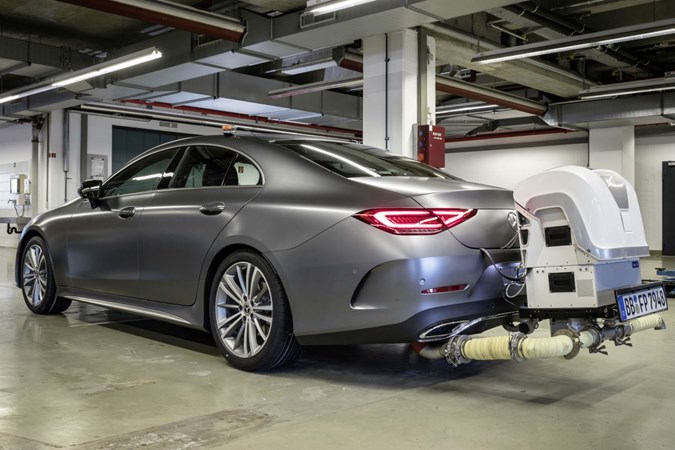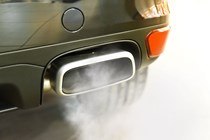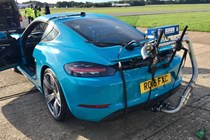The European car industry could be thrown into crisis after a report showed real-world car CO2 emissions are far higher than those recorded in the official WLTP tests. It comes after a another report recommended the EU change its policies to include an upper limit on car CO2 emissions and the adoption of an EV market-share target.
In the most recent report, the European Commission found that petrol, diesel and hybrid cars miss their official WLTP fuel economy and CO2 emissions figures by big margins. Data collected from 600,000 cars across the European Union’s 27 member states found that petrol cars missed their WLTP numbers by an average of 24%, and diesels missed theirs by 18%.
But plug-in hybrids (PHEVs) were the worst offenders, blowing through their WLTP figures by a whopping 252%, on average. Why such a big discrepancy? The report suggests that PHEV drivers plug in to recharge their cars’ battery much less often than the WLTP testing regime assumes.
The Worldwide harmonised Light-vehicle Test Procedure (WLTP) was introduced in 2017. Developed by the European Union, it replaced the notoriously inaccurate New European Driving Cycle test. Launched in wake of the Volkswagen Dieselgate scandal, WLTP was intended to better reflect real-world driving conditions, though the test was still carried out in laboratory conditions.

Later, the EU quietly passed new rules stipulating that all cars built from 2021 must be fitted with on-board fuel consumption monitoring systems (OBFCMs). Manufacturers are required to collect the data and submit it to the European Commission annually, and it’s this data the March report is based on.
The report notes that there is currently insufficient data to draw any solid conclusions and that the circa 20% discrepancy for petrol and diesel cars is ‘in line with what the Commission had anticipated.’
However, a report published by the European Court of Auditors in January 2024 may jolt EU legislators into action. The report backs up the findings of the Commission’s report – and had harsh words on the quantity and quality of data provided by the car manufacturers.
But the ECOA also fired a warning shot that may send shockwaves through the European car industry. Its report recommends that the EU ‘refocus CO2 emission reduction targets’ by abandoning the current fleet average standards – that is, the average CO2 emissions of all the cars a manufacturer sells in a year. Instead, the ECOA says the EU should adopt an EV market share model, similar to the UK’s zero-emissions vehicles sales mandate.
But the report goes even further, suggesting there should a cap on real-world CO2 emissions ‘at manufacturer level’ for all combustion engine cars, including hybrids. That could mean sales of certain cars are heavily restricted, if not ended – the report notes that the increasing weight and power of combustion cars is an issue in reducing CO2 emissions.
The target date suggested for implementing both recommendations is aggressive – 2026. The EU isn’t yet making noises about adopting them but, if they are, they could prove to be a massive headache for car manufacturers already scrambling to meet the upcoming Euro 7 emissions standards, and the EU’s 2035 ban on new petrol and diesel cars.

What this means for you
It’s not surprising that the European Commission’s report has found discrepancies between WLTP figures obtained in the lab and real-world fuel economy and CO2 emissions. At Parkers, we’ve always acknowledged that official mpg figures be taken with a pinch of salt, especially for plug-in hybrids.
A PHEV will only come close to them if you recharge its battery as often as possible to maximise running on electricity, without the engine. When the battery runs out, economy is generally worse than for an equivalent petrol car, because of the extra weight being lugged around. Post-Brexit, the UK isn’t bound by car-related European Union regulations, so we may not feel an immediate impact if the European Court of Auditors’ recommendations are implemented. However, we would do if a future UK Government aligned fully with EU rules.









